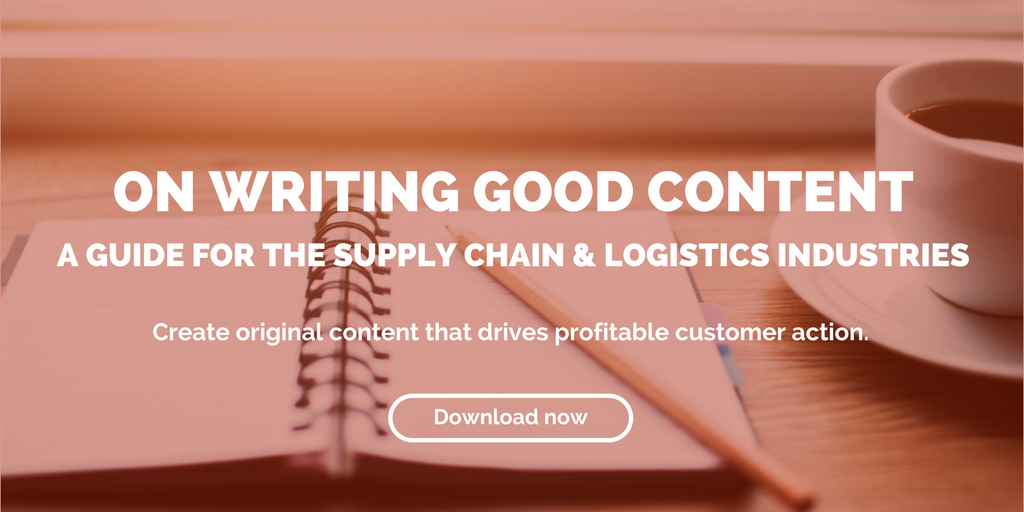
by Fronetics | Mar 29, 2017 | Blog, Content Marketing, Marketing, Social Media, Strategy
Follow these four steps during the trade show to ensure you’re getting the most out of your lead generation efforts.
This is the second installment in our three-part series about generating leads around a trade show.
As you enter the convention center, you feel confident in your preparation for the trade show. You have been setting goals, researching your audience, advertising, and creating fresh content to distribute at the show.
But now you are focused on how to stand out amongst the other attendees. How do you promote your brand while you are surrounded by your competitors?
It should go without saying, but having personable, knowledgeable staff that are excited about the show and eager to educate customers is the foundation for trade show success. If potential customers enter your booth, and they are not immediately greeted with a friendly smile and a helping hand, you are missing opportunities for leads.
Once you have established which staff best suits your trade show needs, you can focus on standing out on the floor. Here are four tips to ensure lead generation success while attending the trade show.
Engagement and lead generation at the trade show
1. First impressions last
According to the Harvard Study of Communications, 55% of first impressions are based on visual cues. The way you look, the way you dress, and the appearance of your booth are saying a lot about your brand and products before you even open your mouth.
The visual displays at your booth should sell your brand as much as your staff. Invest the time and money into shirts with your company logo for staff to wear. Have tablecloths that represent your company’s image. And develop presentation boards that highlight new products and services. First impressions are so important because they last. You want to make sure that every person that walks by your booth gets the right impression about your brand.
2. Extend your reach with a giveaway
Cost-effective promotional items not only provide brand exposure, but also can attract quality leads to your booth. Get creative with your giveaways and use them as an opportunity to spread your logo throughout the trade show.
Giveaway items should be unique and useful. For example, promotional products guru Cathy Houston suggests a money clip for your smart phone. “This slim silicone pocket attaches to the outside of any mobile device and is perfect for storing driver’s licenses, credit cards, hotel keycards, business cards, and cash. … It can be useful to attendees right away.” With people constantly checking their phones, this giveaway will be a visual reminder of your booth across the trade show floor.
3. Create an experience
It’s not enough to simply promote your products and services at a trade show. You need to get attendees involved by creating an interactive booth.
The more hands-on, the better. Live demonstrations of new products allow potential customers the opportunity to try out what you are selling. Creating games or contests also gets attendees involved by having them answer questions or engage with your staff. While interacting with attendees, make sure you are capturing their contact information and leading them to your landing page (that you created before attending the show).
4. Make your attendance known on social media
You already have used social media to let prospects know you are attending the trade show. So keep up the posting and tweeting while you are at the show.
Use time-sensitive giveaways to boost booth attendance and promote special sessions and upcoming presentations live from the trade show floor. Videos and pictures of your live demonstrations and contests are sure to create a buzz amongst attendees. Use these posts to continue to push your landing page and let potential customers know what you are up to throughout the trade show.
Creating a presence at a trade show gives you a powerful platform for meeting new customers, reconnecting with existing clientele, and building a more established brand. Exhibiting at a trade show gives you unparalleled access to important prospects, who are taking the time to learn about your products and services. These four tips can help you get the most engagement from your attendance, while collecting leads that will ultimately grow your business and sales.
Other posts in this series:

by Fronetics | Mar 28, 2017 | Blog, Content Marketing, Marketing, Social Media, Strategy
Follow these four steps ahead of the show to ensure you’re getting the most out of your lead generation efforts.
This is the first installment of a three-part series about generating leads around a trade show.
As thousands of us prepare for our travels to Chicago to attend ProMat 2017, many are wondering: How can I maximize my time? What can I do to stand out? What will help me generate the most new business?
These are important questions — ones that deserve careful thought and strategy. So we created a three-part series to help you make the most of your next trade show.
In this first part, we will focus on the prep work you can do before heading to your trade show that will set you up for success.
Pre-show prep in 4 steps
With over 850 exhibitors attending ProMat this year, it is important to start the work of nurturing leads before you even leave your office. Strategically planning for this event can help you get the most out of your trade show experience, and get you the leads to grow your business and increase your sales.
Here are four tips to get you started on the right track.
1. Set clear goals
Why are you attending ProMat? What do you hope to gain from your attendance, in addition to leads? Understanding why you are attending a trade show is the foundation for creating what you want to achieve from your presence.
For example, if your goal is to boost your social media presence, make sure every handout, landing page, and face-to-face interaction includes a request to like your company on Facebook (or other social media sites). Or if you are hoping to educate potential customers on a new product, work on creating exciting new marketing handouts and presentations that can be displayed during the trade show.
2. Research your audience
Focusing on who will be attending the show can give you invaluable insight into the motivation behind their attendance and how you can best capture their attention.
Performing prospect research using the list of attendees — including anyone who has given you their contact information through social media, your landing page, or website — provides added awareness about your target audience. You can also go one step further and reach out to high-value prospects on your social media sites to step up a meeting time during the show.
3. Advertise, advertise, advertise
Your company has spent valuable resources to attend the show, so make it known that you’ll be there. Reach out to customers, attendees, and contacts through your social media outlets. Most trade shows have event-specific hashtags (#ProMat) to help spread the word on Twitter, Facebook, Instagram and LinkedIn.
Make sure to include your booth number and location, if possible. Get creative with fun teaser videos to engage with potential customers and get them curious about your new products. Creating an event-specific landing page to channel your prospects into one location, giving you a place to answer questions, create a running list of leads, and continue to promote your presence at the trade show.
4. Create content to distribute
It’s imperative to have content (brochures, templates, etc.) that highlights your brand and products. You should create content that can be distributed during the show that supplements your booth staff, helping them to educate and answer questions.
For example, you can create copies of a presentation you are giving. This allows attendees that cannot attend the presentation to still obtain the valuable information and affords you the opportunity to expand upon the presentation. Preparing these handouts ahead of time allows you to skip the last-minute scramble and focus on being present at the show.
These four tips can get you started on your journey to a successful trade-show experience. Using inbound marketing and social media tools, you are already ahead of your competitors before you even arrive at the show.
Other posts in this series:

by Fronetics | Mar 20, 2017 | Blog, Content Marketing, Marketing
If you want to connect with your target audience, make storytelling a part of your content strategy.
If you want content marketing to make a big impact on your business, your audience needs to connect with your content. You need to engage them. You need to grab them emotionally and intellectually. You need to get them thinking.
The best content feels like a great story. That’s because stories do all those things and more.
Content that reads like a great story will facilitate engagement and brand loyalty with your audience, which, in turn, will lead to content marketing success. Here are some tips to incorporate storytelling into your content strategy.
Make your brand tangible to your audience.
Statistics and graphics have their time and place. But real people and real experiences are the best way to connect with your audience on a deeper level. Tell real stories — how a customer benefitted from your product, for example — to get your audience to understand what your company can do for them.
When you engage readers and get them involved in your story, you create long-lasting customer relationships. Storytelling makes them form an emotional bond with your company, which drives brand loyalty.
Greg Hadden, executive creative director of Motive Made Studios, sums up the power of this strategy: “What often gets lost is the fact that good storytelling is potent stuff. It has the power to make people want to believe and to belong, which is the goal of all storytellers. We’re all selling something, be it an idea, an exploration of the human condition, or say, a vacuum cleaner. It’s no mistake perhaps that good stories often create products.”
Humanize your content.
Yes, at the end of the day, we’re all selling something. But your content should not be a sales pitch — it should speak to your audience rather than at them. It should connect with them on a human level.
Your content should represent what you do, what your customers stand to gain, and how you are making life better for your customers and those around you. It should convey genuine enthusiasm for your work.
One of the best ways to tap into this enthusiasm is by thinking about what your company stands for and building content around those principles. Is sustainability at the core of your mission? Does your company pride itself on improving customers’ productivity and efficiency? These are messages that can humanize your brand — and that your audience can believe in and relate to.
Whole Foods is an exceptional example of a company using content to connect with its audience and establish itself as a lifestyle brand focused on healthy eating and living. It curates content, for example, about how to save money while still eating healthily. While not directly related to its products, this kind of content understands the needs of the target audience interested in Whole Foods’ products. Further, its content conveys the company’s passion for earth-conscious living and uses proactive language to allow readers to feel like they have an active role in that mission.
Successful content begins with connection. The more you can walk the line between telling a story and promoting your brand, the more connections you’ll make. Start by being yourself and talking about what drives you in your content. The stories you share will be authentic and tangible to the target consumer who is interested in what you have to offer.
Related posts:


by Fronetics | Mar 2, 2017 | Blog, Content Marketing, Marketing, Social Media
These online benchmarking tools can give you insight into how your industry peers are performing on social media, in keyword searches, and more.
Senior Director of Strategy Kate Lee recently wrote about the importance of benchmarking your marketing performance against your competitors. To define success within your market and industry, you need to look outside what’s going on internally and compare yourself to your peers. This will also help your company identify threats and strategic opportunities.
Benchmarking gives you a context to understand how your marketing efforts are paying off. But running another set of reports and keeping track of all those metrics could be a full-time job within itself — and ain’t nobody got time for that.
The good news is there are some really effective tools available for marketers to quickly, even automatically benchmark their performance against the competition. Let’s take a look at three of these platforms below.
3 tools to benchmark your performance
1) BuzzSumo
BuzzSumo’s slogan, “Add value, be uncommon,” exemplifies its mission: to assist companies in creating the most relevant content for their individual audiences. The comprehensive content tool offers insight on what topics are trending, which influencers have the most reach, and more.
The competitor research feature will be of particular interest to those hoping to do some competitive benchmarking. It offers competitive intelligence, such as:
- What content is getting traction for my competitors?
- On what networks are they having success?
- Who is sharing their content?
- How does our content compare?
Overall this site will save you time that you would have spent compiling and analyzing data about you and your competitors.
Pricing: BuzzSumo’s pricing varies from $79-$599 per month, but there’s a free trial option to help you decide if Buzz Sumo is right for your company.
Ease of use: There’s a lot of information to digest, but the compelling data displays make it as easy as possible.
Clients: Rolling Stone, Expedia, National Geographic, IBM, Capital One
2) Serpstat
Serpstat identifies itself as the “growth-hacking tool of marketing” and the “all-in-one SEO platform for professionals.” It offers an abundance of insightful features to view your data in comparison with your competition. You can find answers to the following questions:
- What keywords are placing your competitors in the top search results?
- What does your competitors’ AdWords and paid search look like?
- What does your competitors’ strategy look like in regard to their budget, ad positions in search results, and cost-per-click for AdWords?
Pricing: Serpstat ranges anywhere from $0-$299.
Ease of use: While Serpstat provides an overwhelming amount of information, their 24/7 user-friendly chat feature makes things a little easier. They also offer a completely free demo via Skype or Google Hangouts in as little as 20 minutes.
Clients: Yves Rocher, Gift Baskets Overseas, GL Marketing
3) Rival IQ
Rival IQ offers “digital marketing analytics with a competitive edge.” Essentially, it allows you to compare your performance in social media, keyword ranking, and content against other companies. You also learn when growth in those categories happens for your company, as well as what is driving it. It answers:
- What do your social media metrics (followers, likes, etc.) look like versus your competitors?
- What do your competitors’ social biographies look like, and what are they changing?
- What do the “best” social media posts look like across your competitive landscape?
Pricing: anywhere from $299-$799. They’ll even work with you to create a customized package. A free trial is also available.
Ease of use: While the information presented is extensive, it is displayed in a way that makes it easy to digest. According to New York Times best-selling author Jay Baer, “Rival IQ is a game-changer. Incredibly useful intelligence about the digital activities and successes of your competitors, delivered quick, easy and smart.”
Clients: Studio Science, the Media Flow, Convince & Convert
These three benchmarking tools can help your business gauge how you’re fairing against the competition. The right one for your company could give you a competitive edge, helping you surpass your goals — and your competition.
Related posts:


by Fronetics | Feb 7, 2017 | Blog, Content Marketing, Manufacturing & Distribution, Marketing, Supply Chain
Here are four key takeaways from the manufacturing content marketing report.
The Content Marketing Institute (CMI) has released the results of its annual manufacturing content marketing survey, and there have been some big changes since last year.
Like many businesses in the logistics and supply chain industries, manufacturing companies have been slow to adopt modern marketing principles. Many are hesitant to undertake a content marketing program, whether from lack of time or lack of knowledge about how it works and the benefits.
But that is beginning to change. Manufacturing companies are realizing how much there is to gain from inbound marketing strategies. They’re practicing content marketing, and it’s paying off. In fact, CMI has been conducting the survey among manufacturing operations for the last four years, and never before have the results indicated such progress.
We’ve summarized four of the things you need to know.
4 takeaways from the CMI manufacturing content marketing report
1. Marketers are improving at content creation.
Compared to one year ago, 59% of manufacturing marketers report more success with content marketing for their organizations. A whopping 82% of that group credits this increased success with improved content creation. This means that marketing professionals are getting more efficient at producing higher-quality content.
Related resource: Check out our guide on writing good content.
2. A documented strategy gets results.
This year’s study showed a 72% increase in companies’ documenting their content marketing strategy. Documenting your strategy allows you to set goals, identify benchmarks, and follow through on your objectives. It’s also easier for your organization to come together with a unified, well-rounded marketing and sales strategy.
Related resource: Start crafting your strategy with our content strategy template.
3. Content marketing is becoming a greater priority.
It may seem obvious, but for greater content marketing success, your business must prioritize your content marketing efforts. Of marketing managers who reported increased success last year, 62% credit putting content marketing higher on their priority list. This means communicating with leadership to ensure ample time to produce quality content.
Related resource: Show your bosses these 6 marketing metrics they really care about.
4. Manufacturing marketers are becoming more seasoned with content marketing.
The manufacturing world is gaining experience with content marketing. According to CMI’s survey, more than half (56%) of respondents report that their organizations’ content marketing maturity level is either sophisticated, mature, or adolescent — as opposed to young or “first steps.” That’s an 8% jump from last year. Gaining experience creating, documenting, and implementing a strategy is what ultimately allows marketers to determine what works for their business — and to see sustainable success.
Related resource: See how companies in the logistics and supply chain industries are using content marketing.
Going forward
CMI identified some areas for improvement for manufacturing marketers. Consider these recommendations as goals for your business as 2017 progresses:
- Fully commit to content marketing. It’s time to go all in.
- Focus on clarity in setting goals and documenting results.
- Have a real vision of what success means for your business.
Manufacturing operations have come a long way in the past year with content marketing. As the supply chain industry gets more and more comfortable with this kind of marketing, the possibilities for business development continue to grow.
Related posts:







